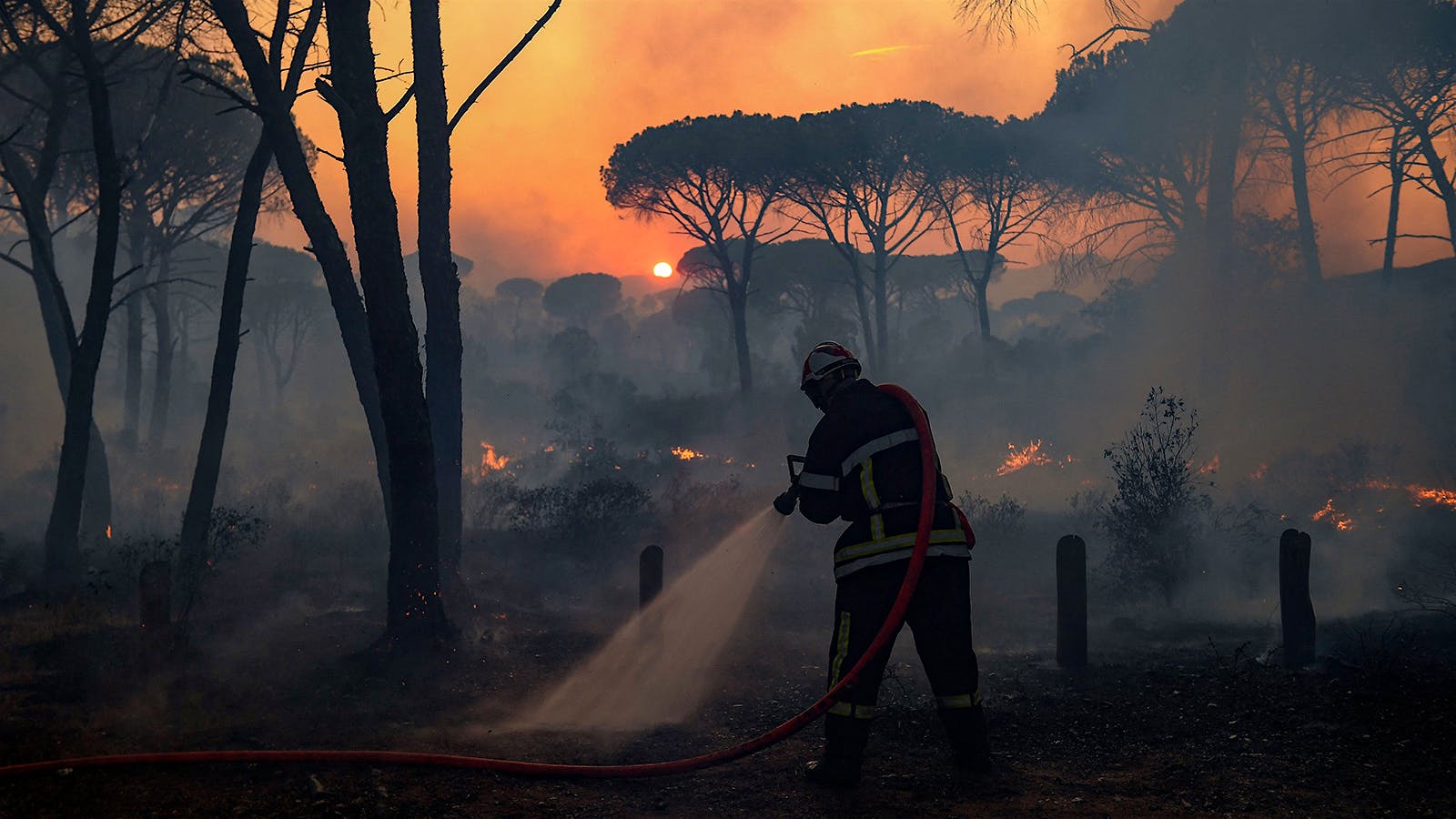A devastating wildfire has swept through parts of the Var region in Provence, leaving winegrowers reeling from the loss of buildings, equipment and grapes just days before the 2021 harvest. “It’s been annus horribilis for French winegrowers. We’ve had frost, we’ve had hail and now wildfires,” Eric Pastorino, president of the regional trade group Conseil Interprofessionnel des Vins de Provence (CIVP), told Wine Spectator.
The extent of the damage is not yet known, and the fire continues to burn in some areas, though the spread has been halted. Only a few winegrowers have been able to return. Authorities estimate more than 19,800 acres have burned so far, including vineyards, towns and 17,500 acres of protected forest in the Plaine des Maures Nature Reserve. Two people are confirmed dead. At the most critical stage, 1,200 firefighters were battling the blaze. Thousands of people were evacuated from homes, hotels and campsites.
The global impact on the Côtes de Provence appellation, renowned for its rosé wines, should be limited. The region contains 49,400 acres of vines.
Brice Aymard, CIVP director, told Wine Spectator that perhaps 5 percent of the appellation had been impacted. But for those in the fire zone, it was terrible. The damage to the fruit on the eve of the harvest is particularly wrenching. “You have grapes that are either shriveled by the heat or sprayed with fire retardants or they’re at the end of the vineyard row, so they burned,” said Aymard. “But the grapes in the center of the plots are fine and those can be harvested.” There is also the concern of smoke taint, though it’s unclear how much smoke grapes were exposed to and for how long.
Tragically, a few estates appear to have lost everything, said Pastorino. “Their cellars burned, their house burned, their equipment burned—everything. We estimate that a dozen estates suffered serious damage. Those in the nature reserve were hit particularly hard.” The forest is a vital enclave of biodiversity in the region, but in this case it also fueled the fire’s path.
“Half of the Plain des Maures nature reserve has been devastated,” said Concha Agero, deputy director of the French Office of Biodiversity.
Some vineyards abut the forest. Two decades ago, after another wildfire, vintners pushed for the creation of firebreaks but were met with opposition from ecologists protecting the forests, concerned about making further changes to the land and with impacts on Hermann tortoises, an endangered species. “We would really like to have fire breaks. It’s an ancient system that has proven that it works,” said Pastorino. “It functions well. It doesn’t stop the fire but it slows it down.”
The owners of Vignobles Chevron Villette have vineyard plots surrounded by the nature reserve forest. Those vineyards were hit hard by the fire, they say, though the extent is unclear. Luckily, they have parcels in other areas that remain unscathed and their buildings are fine.
The owners of Domaine Mirabeau have been unable to return, but a worker helping firefighters sent them photos showing some outbuildings and vine rows had burned, but their house and winery still stood.
Officials believe the fire started on Aug. 16, with a discarded cigarette butt at a highway rest stop near Gonfaron, close to the nature reserve. Five days later, a man was arrested for attempting to start another forest fire along a road in the Massif des Maures area using a lit log; passersby were able to put out the fire. At this stage, investigators do not believe the incident is related to the larger fire.
A dry summer combined with extreme heat and strong Mistral winds left the region particularly vulnerable. Fires have also broken out recently in the Beaumes-de-Venise region of Provence and the Aude region.
As of today, the Var fire is no longer spreading; however, it is not under control, according to the Var fire brigade. Four hundred firefighters continue to combat the flames from the air and on the ground. A strong Mistral wind could cause it to take off again.
Evacuated vintners have not yet been able to calculate the full extent of the damage—charred tractors, cellars turned to ashes, the potential for smoke taint. “We can’t reach the estates so it’s complicated to manage,” said Pastorino, who is also president of the Gonfaron wine cooperative, with 150 growers and 1,500 acres under vine. Within their cooperative, 99 acres of Côtes de Provence AOC vines burned, some totally, some partially.
The Var wildfire follows on two vintages hampered by frost. In April of 2020, temperatures inland in Provence plummeted below 16° F with some plots suffering 80 percent crop loss. But like the Var fire, the impact was localized, which leaves the vintners optimistic about the 2021 yield.
“The yield this year will be similar to last year, ” predicted Pastorino. “We start harvesting this week. We’re still hoping for some nice surprises.”
Stay on top of important wine stories with Wine Spectator’s free Breaking News Alerts.
